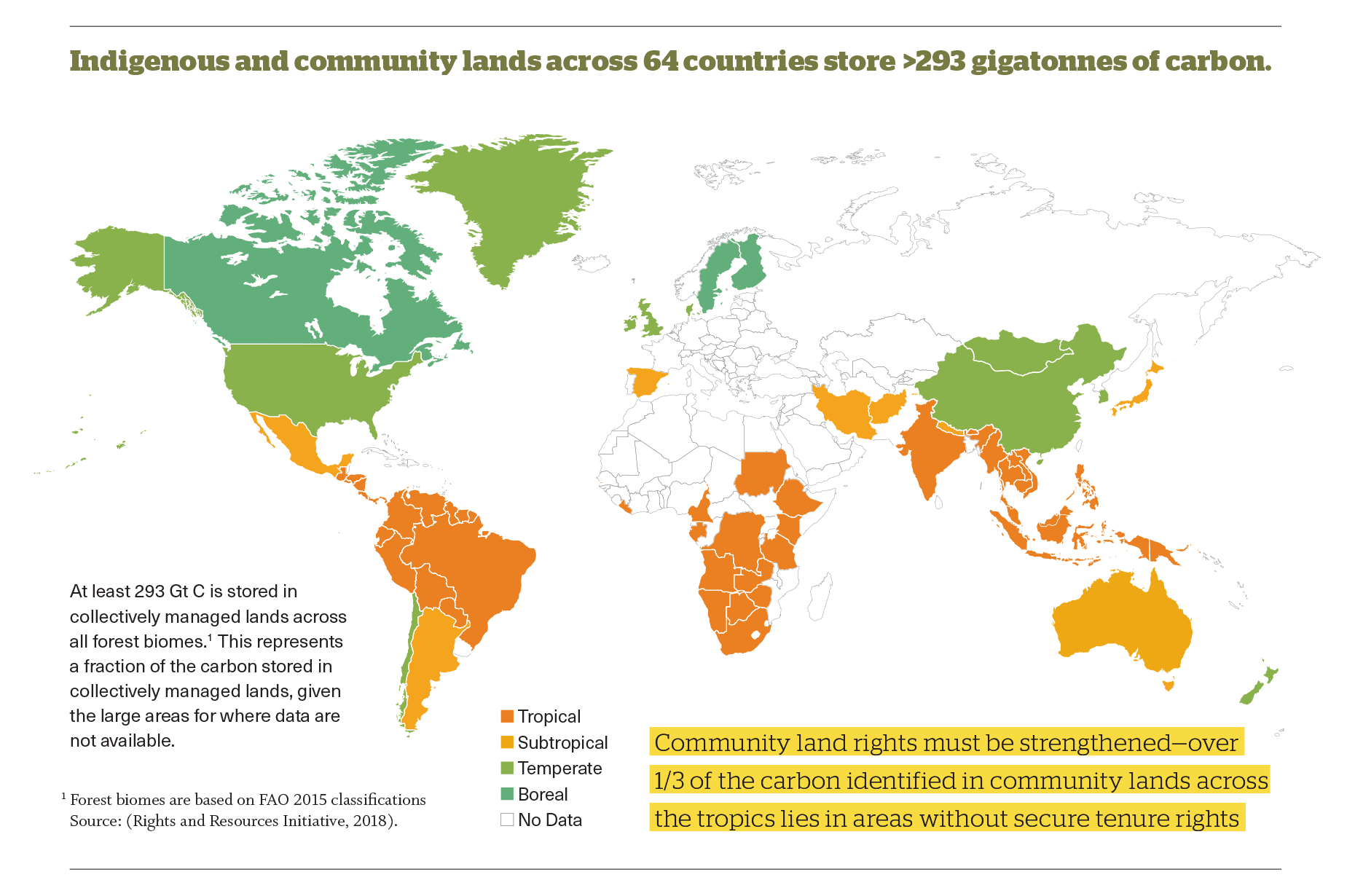Resources from Indigenous Peoples
Indigenous peoples and local communities are essential to fighting climate change. Indigenous knowledge systems help maintain and build resilience, also by addressing biodiversity loss.
Recognizing and protecting rights of indigenous peoples and local communities is one of the most important climate actions to take. Indigenous lands are disproportionately important to the task of stabilizing the climate – both lands currently under indigenous or local management, and areas of necessary restoration, particularly important also for biodiversity.
Indigenous and community-managed lands are critical for carbon storage.

As a result of years of struggle by indigenous groups and others, from 2020 onward there is an UNFCCC mechanism to engage with traditional knowledge and indigenous science. The Local Communities and Indigenous Peoples Platform (LCIPP) allows for sharing of best practices on adaptation and mitigation. The platform needs to be developed in full partnership with indigenous peoples and local communities, and used to help inform ambition in NDCs. The initial (2020-2021) workplan is here.
Dr. Pasang Dolma Sherpa, co-chair of the LCIPP’s Facilitative Working Group, reflects on the historical journey of indigenous peoples at the climate change negotiations.
Tebtebba’s 2020 report ‘Climate Justice and Indigenous Peoples’ provides background on impacts of climate change on indigenous peoples, with a focus on the Philippines.
CLARA’s ally Rights & Resources analyzed the amount of carbon in forests managed by indigenous peoples and local communities in this report.
- Ambiente Y Sociedad: Cultural Perspectives on Climate (Colombia)
- FERN: Healthy Forests and Resilient Communities (Congo)
- Forests of the World: Titling Indigenous Peoples Lands (Honduras)
Library Resources
LCIPP
- Overview
- Workplan
Rights and Resources
- Indigenous Lands Contribution